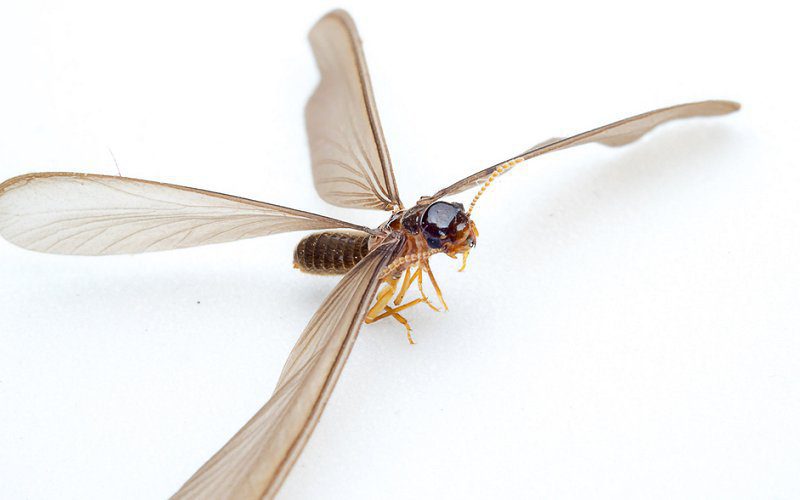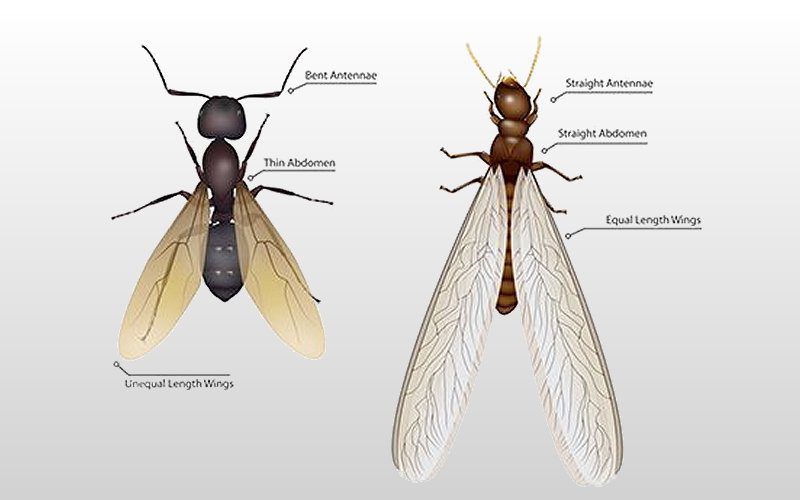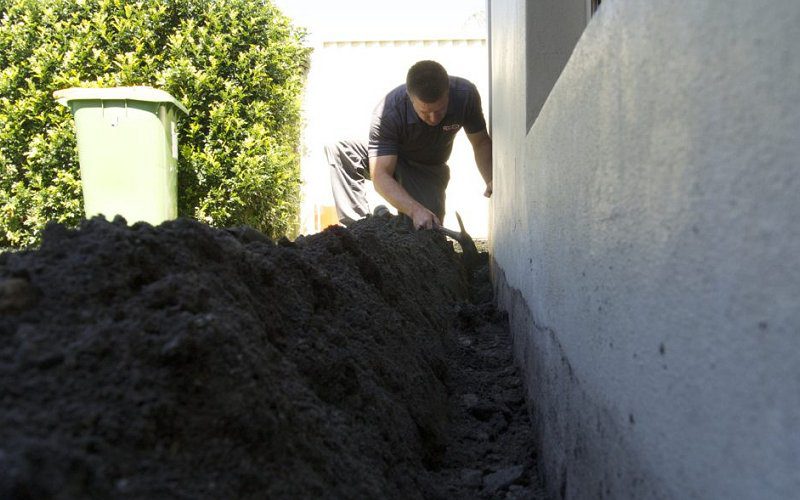
Australian operated

Australian operated
Free on-site visit & quote
Over 14,000+ homes protected
5/5 stars is most frequent rating
As the season changes from winter into spring and summer, and the humidity levels begin to rise, so does the increase risk of a termite infestation within your home. Subterranean termites are able to build colonies in the underground in order to infiltrate your property and cause damage of mass destruction – causing more damage to homes in Australia than fire, floods and storms combined. Known as the ‘silent destroyers’ termites are able to hide away for years, silently munching away at your much-loved home. Given the chance, the subterranean termite will eat your home to the ground.
One key factor to be on the lookout for in regards to a termite infestation is the presence of flying termites swarming in large clusters. One of the triggers of a termite swarms is the combination of the increase in temperature with a heavy rain fall.
If you see swarms of flying termites around your home, it should alert you as a warning sign of two potential dangers: that you already have an existing termite issue; or your home is at risk from a potential infestation of termites.
If you see flying termites around your property – call a professional termite inspector as soon as possible.
Flying termites are usually light gold in colour and usually have six legs. They have two tiny antennae which are most often straight with a slight curve to them, and can normally be identified by their thick body which is made of only one part. They have two large, translucent wings on either side of their body, sometimes as large as 3 centimetres per wing and have a veiny appearance.
The flying termite can be found all over the Australia. Warm conditions are ideal for termite colonies as they prefer an average temperature of 25-28 degrees. In Australia as the summer season approaches, the tropical downpours are the perfect breeding ground for termites. A termite colony is made up of three groups and the subterranean termite is the type of that species which is able to develop wings and fly. This group of termite is the only able to develop sexually and become the future queens and kings of the next season’s termite colonies.

At the peak time of the day, during the hottest hour, the termites will fly out of their colony in the millions. A common misconception is that termites are grounded pests but all of the subterranean termites fly out of the colony to which point the vast majority who don’t become the future kings and queens, lose their wings to become worker or soldier termites.
A swarm of termites flying towards your house has the potential to land 50,000 of them at one time however, generally only around 10 percent of those termites will successfully find a mate and be able to start a new colony.
Flying termites are commonly mistaken for flying ants and although at first glance, they do appear similar in size, shape and colour, there are some notable differences to be on the lookout for. The main difference between a flying termite and that of the ant are the wings. All four wings on the termite are of equal length and width, whereas the two top wings on the flying ant are usually double the size of the bottom two wings. The antennae of the ant bend at a 90-degree angle as opposed to the flying termite, which has a straight antenna with a very slight bend at the end.
Ants are darker in colour than termites which usually a light beige/golden colour with translucent, veiny wings. The body of the flying termite is slightly bigger than the flying ant by around 2-3 millimetres and are made of only two parts: the head and body, as opposed to ants which are divided into three parts of a head, body and tail.

Like most flying insects and pests, termites are very attracted to all sources of light. They are particularly drawn to straight lighting and you may see termites in the millions swarming around it. They’ll often come into a home and sometimes fly down through a down light by the thousands.
This can be quite distressing for the homeowner but the best thing to do should you find yourself in this situation, is to turn off all of your lights (including any outside lighting), open all your doors and windows and the termites should fly out of your home as quickly as they entered it.
The worst possible thing you can do is attack the termites with a can of insect spray as it is pointless and you be wasting precious time. You want to get the termites out of the house as quickly as possible before they can drop their wings.
The flying subterranean termite is very difficult to treat and your best plan of attack is one of defence. Having your house protected with a termite system and protection barrier will help prevent termites from burrowing underground and building a colony. Without this protection, termites are able to burrow underground and find a mate. Once the queen termite reproduces, she is capable of laying over 30,000 eggs a day. At that rate you could have a thriving colony under your house and over the course of one or two weeks, those termites will be in your house, causing mass destruction by silently eating away at your home.
This nightmare scenario can easily be avoided by taking the necessary precautions and calling a trained pest control expert for an inspection and to install a perimeter termite barrier around your property.

While there’s nothing you can do to stop flying termites from swarming onto your property, there are some precautions you can take to reduce the opportunities for a flying subterranean termite from flying into your house.
The first thing is to have screens installed on your windows and doors, making sure they stay free of holes and tears in the fabric. It’s important to be aware of the amount of moisture in your home and do what you can to reduce those levels at all times. Termites absolutely thrive in water and damp areas and it’s very common for homeowners to discover termite issues during periods when they’ve had plumbing problems such as, bathroom leaks or for homes built on steep blocks up against high moisture areas.
If you haven’t fixed that broken washer tap for the past few months and a flying termite finds that moist soil and burrows down, you’ll have a potential termite colony building on the side of your house. Keeping mulch and any other untreated wood off the side of your house and ensuring that you keep basements and attics dry and well-ventilated are other ways of keeping flying termites from your house.
It’s also worth considering your outside lighting source which can be both negative and positive in relation to flying termites. On the one hand the light source will attract termites but on the other, that in itself will alert you to the fact that termites are beginning to colonise and it’s time for you to get an inspection.
Keeping up good housekeeping and maintenance around the house all helps in the fight against termite infestations when combined with the recommended annual inspections and perimeter barrier protection.
Pest-Ex have been providing termite treatment services since 2006 and have more than 7,000 happy customers. We’re also –
Talk to Pest Ex today for all your termite management and protection services – we look forward to hearing from you!
Our focus areas include Brisbane, Gold Coast, Tweet Heads & Logan.







